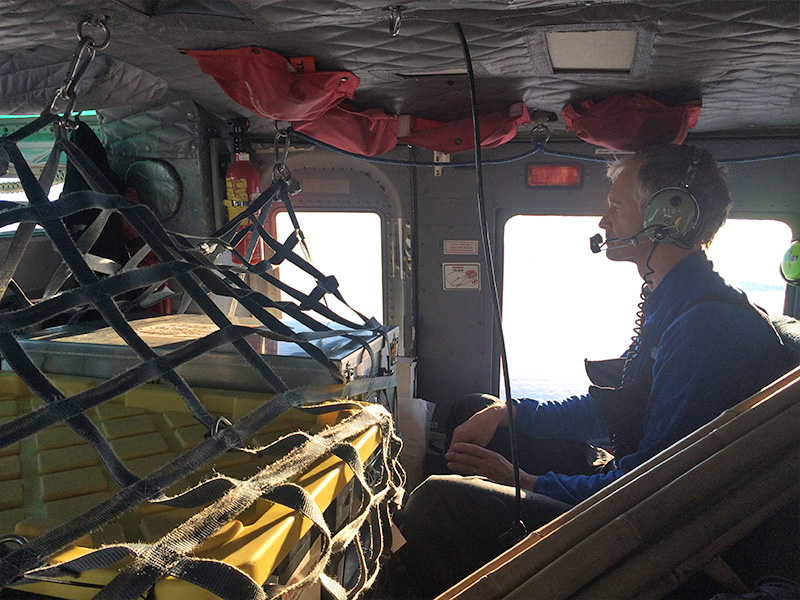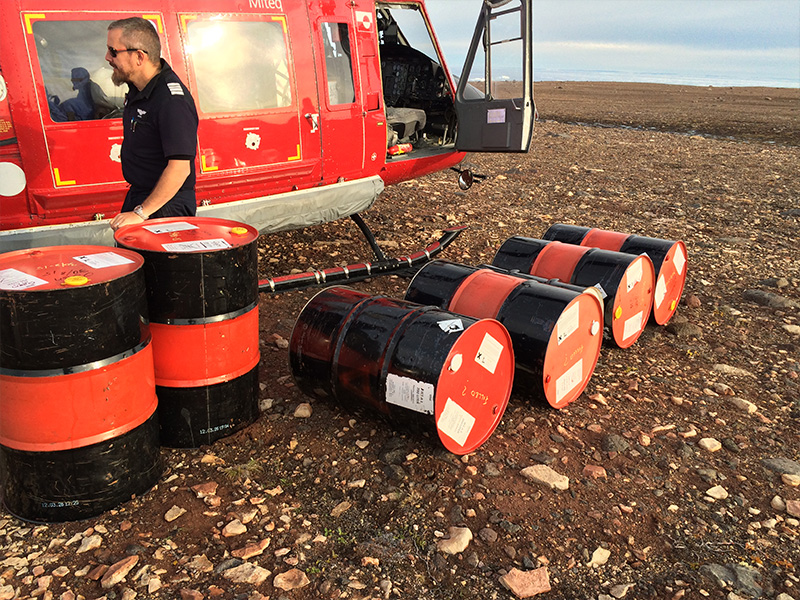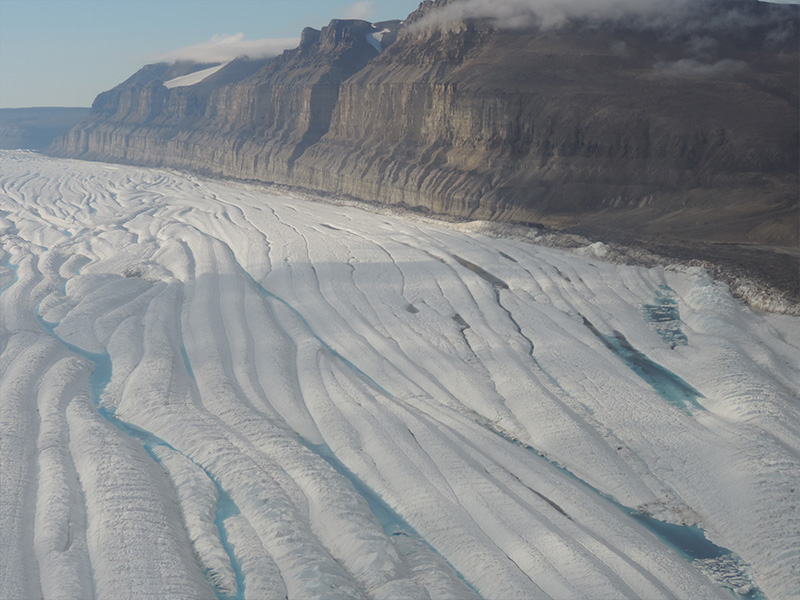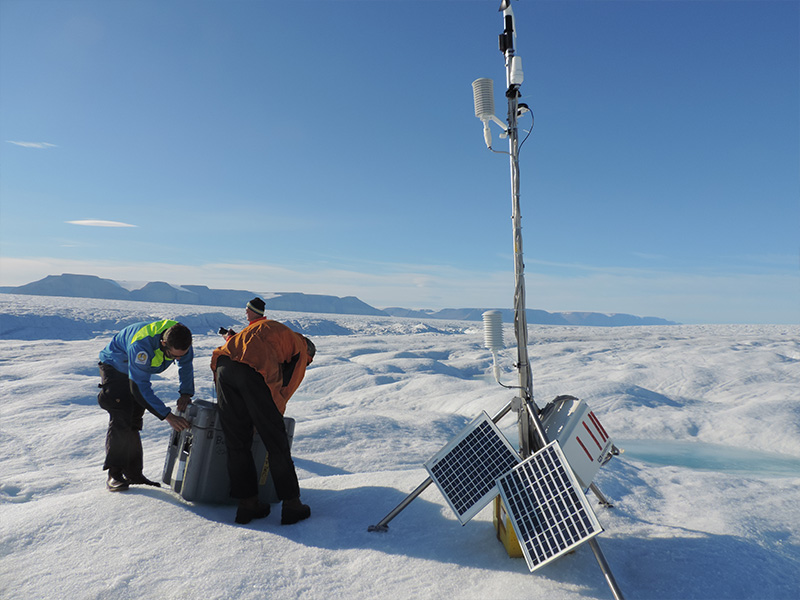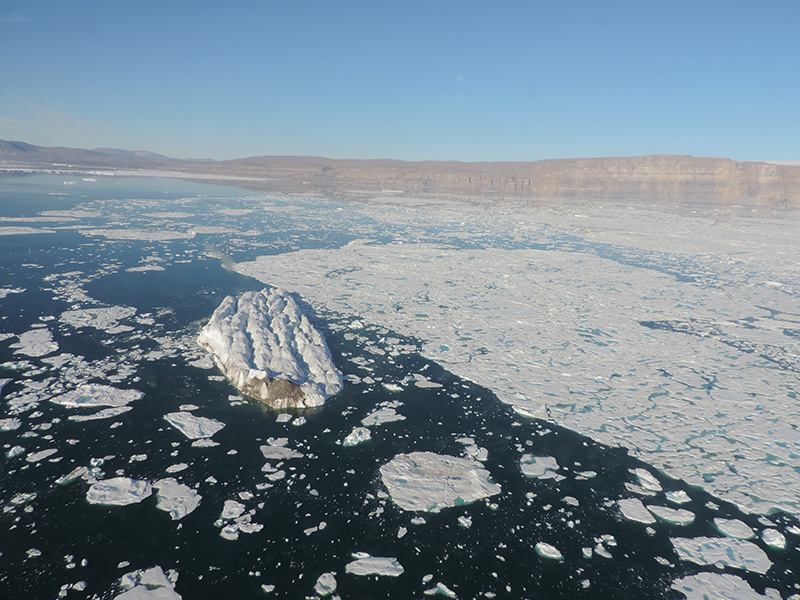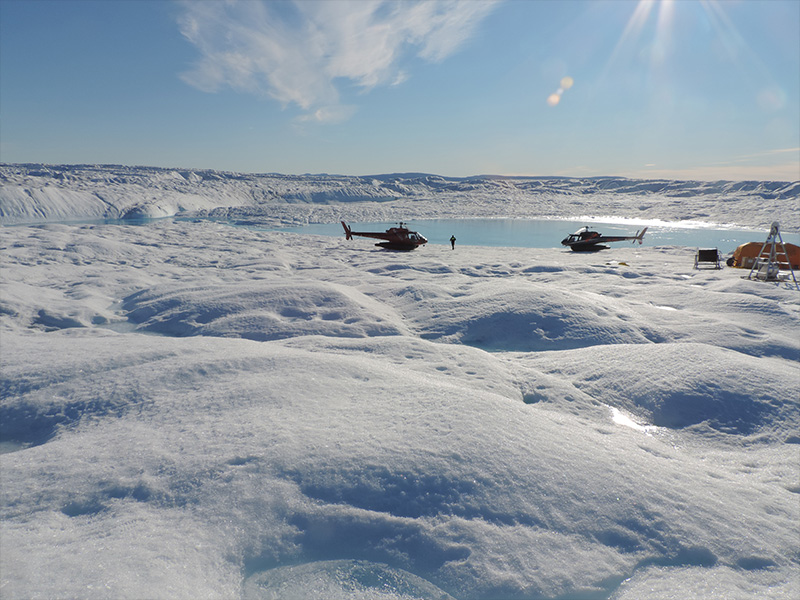

Ocean observations
Animation by Jeffrey Chase February 13, 2017
UD scientists collect data from ocean sensors underneath Petermann Glacier
In August 2015, University of Delaware oceanographer Andreas Muenchow and colleagues deployed the first UD ocean sensors underneath Petermann Glacier in North Greenland, which connects the great Greenland ice sheet directly with the ocean.
Petermann Glacier is the second largest floating ice shelf in the northern hemisphere.
Located approximately 16 to 2,300 feet below the glacier, the five ocean sensors are connected to a weather station at the surface, creating the first cabled observatory on a floating, moving, and rapidly melting Greenland glacier.
The researchers recently reported in the journal Oceanography that sensor data from August 2015 to February 2016 confirms that that the floating ice shelf is strongly coupled, or tied, to the ocean below and to Nares Strait, and temperatures vary with the tides and seasons.
Specifically, the paper found that the same water that has been measured in the fjord is under the glacier, lending credence to the idea that the continuity of the glacier depends on the conditions outside the glacier in the fjord.
This water is warming an average of 0.03 degrees Celsius per year, with temperatures at the deepest ocean sensors sometimes exceeding 0.3 degrees Celsius or 33 degrees Fahrenheit, Muenchow said. These temperature values are consistent at various water depths, and match data from a 2003-09 study in adjacent Nares Strait, which connects to both the Arctic and Atlantic Oceans.
“This correlation tells us this is the same water and that this is what’s causing the melting of the glacier, which could influence sea level rise,” said Muenchow, an associate professor of oceanography in UD’s School of Marine Science and Policy, which is housed in the College of Earth, Ocean, and Environment (CEOE).
The scientists theorize that warmer Atlantic water will continue to arrive inside Petermann Fjord and below the ice shelf from Nares Strait in the next one-to-two years.
Co-authors on the paper include Keith W. Nicholls, an oceanographer with the British Antarctic Survey; Peter Washam, a UD doctoral student; and Laurie Padman, a senior scientist at Oregon State University.
SCENES FROM THE FIELD
UD-developed sensor technology plays key role
The key to the team’s latest research breakthrough, Muenchow said, was the addition of the Delaware Environmental Observing Station (DEOS) weather station in 2015 to the measurements he already was making.
“No one is an island, it takes a community or group,” Muenchow said. “The DEOS weather station technology installed on Petermann Glacier made it possible to receive one and a half years’ worth of data from under an ice shelf – a feat few scientists have accomplished, even in Greenland.”
Developed by David Huntley, a meteorological technician in the Department of Geography, the sensor system provides hourly data through the polar night. Hourly ocean observations revealed large bi-monthly pulses in temperature and salinity within 98 feet of the glacier-ocean interface. The scientists hypothesize that periodic discharge of glacial meltwater, moderated by the spring-neap tidal cycle thickens the boundary layer under the ice shelf at measurement locations.
Ice melt and shifting of the glacier caused the weather station to stop transmitting data to Delaware in February 2016, but the weather station continued to capture data. A site visit in August 2016 fixed communication failures, retrieved locally stored data, and re-anchored the station into the ice to sustain operations into 2018.
“We are the only station in the Northern Hemisphere that is connecting the ocean waters under a glacier to the surface measurements,” he said.
The research also confirmed for Muenchow that seasonal or periodic measurements are not enough to gain a large-scale picture of what’s happening, making continued remote sensing data critical to improved understanding of this globally-relevant phenomenon.
Future research
Muenchow will return to Greenland this March to deploy similar UD technology on a separate National Science Foundation-funded project with Mohsen Badiey, CEOE acting dean.
The collaborative project will take place in Thule, Greenland, about 300 miles south of Petermann Glacier. The team, which includes researchers from Woods Hole Oceanographic Institution, will test and develop an integrated underwater acoustic sensor network for ice-covered seas. Installed in the waters off Thule, the sensor network will operate similar to a cell phone network where data passes from caller to receiver via cell phone towers. In this extreme environment, however, the researchers will use acoustic modems connected to temperature and salinity sensors in the ocean that are attached to land at Thule Pier via access holes drilled through sea ice.
“We are leveraging the DEOS [weather station] technology and adapting it to a different problem to create real-time data from the ocean outside Thule, Greenland,” Muenchow said.
Contact Us
Have a UDaily story idea?
Contact us at ocm@udel.edu
Members of the press
Contact us at 302-831-NEWS or visit the Media Relations website

